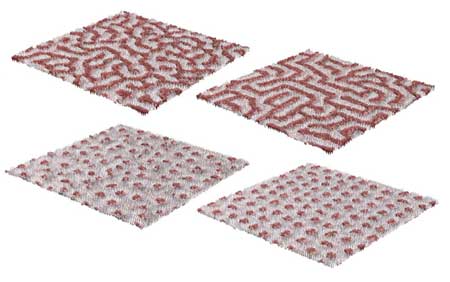| Dec 19, 2020 |
Seeking answers in ferroelectric patterning
(Nanowerk News) Why do some ferroelectric materials display bubble-shaped patterning, while others display complex, labyrinthine patterns?
|
|
A FLEET study (Nature Communications, "Topology and control of self-assembled domain patterns in low-dimensional ferroelectrics") finds the answer to the changing patterns in ferroelectric films lies in non-equilibrium dynamics, with topological defects driving subsequent evolution.
|
|
Ferroelectric materials can be considered an electrical analogy to ferromagnetic materials, with their permanent electric polarisation resembling the north and south poles of a magnet.
|
|
Understanding the physics behind their domain-pattern changes is crucial for designing advanced low-energy ferroelectric electronics, or brain-inspired neuromorphic computing.
|
 |
| Thin-film ferroelectric materials display characteristic, evolving patterns. (Image: FLEET) (click on image to enlarge)
|
Labyrinthine vs bubbles: what patterns reveal
|
|
The characteristic domain patterns of thin-film ferroelectric materials are strongly influenced by the type of materials, and by the film configuration (substrate, electrode, thickness, structure, etc).
|
|
“We wanted to understand what drives the emergence of one pattern rather than another,” explains Dr Qi (Peggy) Zhang (UNSW), one of the study’s three lead authors.
|
|
“For example: what drives formation of mosaic-shaped domain patterning, instead of labyrinth-shaped patterning. And why would drive a subsequent change to bubble-shaped patterning.”
|
|
The research team were seeking a common framework or roadmap driving such domain arrangements.
|
|
“Is there a topological signature in these states? Is their topology evolutive? And if yes, how so? These are the types of answers we were seeking,” says Dr Yousna Nahas (University of Arkansas).
|
|
“We found that self-patterning of ferroelectric polar domains can be understood by examining the non-equilibrium dynamics, and that a common framework is that of phase separation kinetics.
|
|
“We also performed topological characterization, and studied pattern evolution under an external, applied electric field, which revealed the crucial role of topological defects in mediating the pattern transformation.”
|
|
“The results of this study build a roadmap (a phase diagram of polar domain patterns) for researchers to use when wanting to ‘navigate’ through the plurality of modulated phases in low-dimensional ferroelectrics, says Dr Sergei Prokhorenko (University of Arkansas).
|
|
This study is thus interesting in its own field (condensed matter physics, ferroelectrics) but might also be relevant for an interdisciplinary audience in regards to the universality of concepts and results.
|

